The Eversholt: Reviving Heritage with Modern Design
At The Eversholt, three Grade II listed buildings near Euston Station have been transformed into a beacon of modern office design that respects its historic roots. Through the collaborative efforts of architectural firm Anomaly and Akoya, managed by Feldberg Capital, these spaces at 163, 183, and 203 Eversholt Street have been meticulously reimagined. Each building, while maintaining its unique character, now stands as a testament to the fusion of past and present, where large, light-flooded spaces echo the building’s storied past while welcoming a new era of workplace design.
This article delves into the journey of The Eversholt, exploring how Anomaly’s thoughtful design approach has reinvigorated these historic spaces with a blend of heritage charm and contemporary functionality, ultimately creating a sustainable and dynamic office environment.
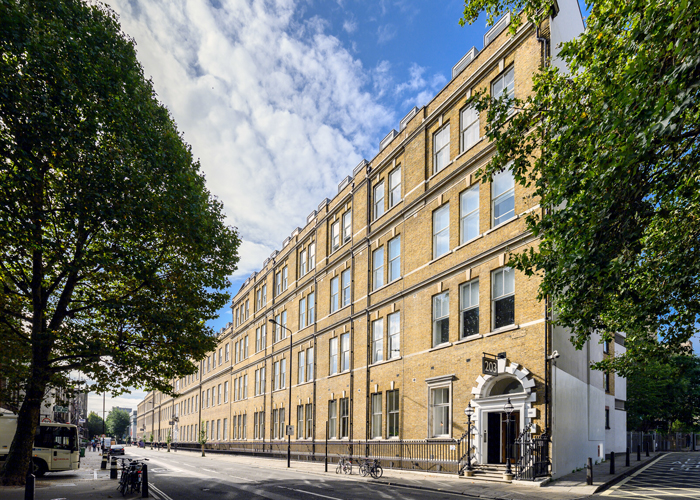
Originally designed by renowned architect Philip Hardwick, creator of the iconic Euston Station, in 1820 The Eversholt first served as a workspace for sorting ticket stubs against the Railway Clearing House’s maps. Now Anomaly, which specialises in retrofit, has expertly combined intelligent exploration with forward-thinking design, resulting in the transformation of a historically significant Victorian building with rich heritage and exciting prospects.
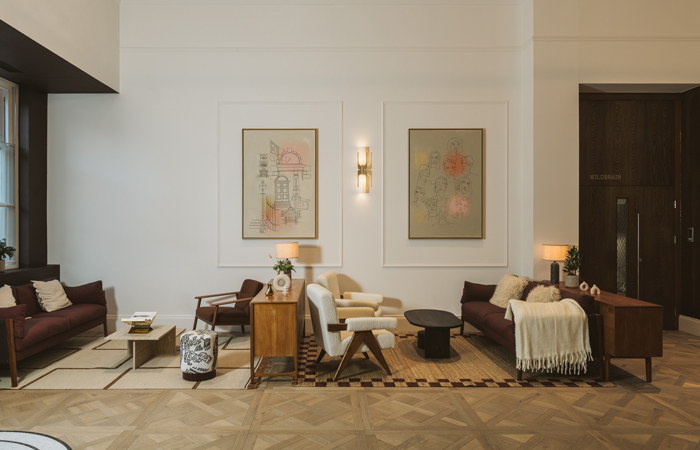
Architectural practice Anomaly, working closely with Akoya (managed by Feldberg Capital) faced a challenging brief. Previous refurbishments in 2016 had stripped out the character and heritage features leaving the building stark and devoid of its original charm. Tasked with transforming these historic spaces, they undertook a holistic view as a collective, whilst maintaining an individual identity.
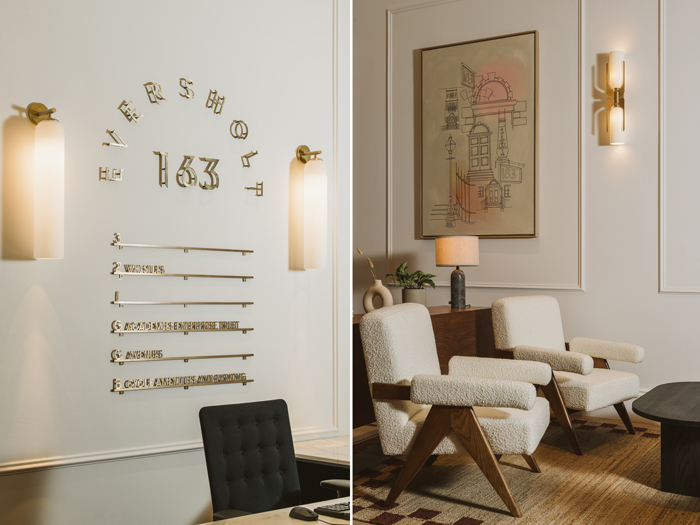
Liam Spencer, Co-Founder, Anomaly, said:
“The design opportunity here was incredible. The existing building was charged with history, but through years of fitouts and refurbishments a lot of that charm had been lost. Working closely with the team at Feldberg we focused on a balance between modern office functionality, enriched by heritage tones and textures with the occasional punch of contemporary art or pattern. In many ways it is a perfect example of what a good office refurbishment should have – one eye on the history of the host building, and one eye firmly on the future of workplace design.”

The result is 50,000 square feet of sustainably refurbished fitted and part-fitted space comprising receptions, common parts, office spaces and end of journey facilities, that perfectly balances history and contemporary comfort. The design team achieved a balance between modern office functionality and the preservation of heritage elements, enriched by the integration of contemporary art and pattern. This approach exemplifies a successful office refurbishment that respects the building’s history while embracing the future of workplace design.
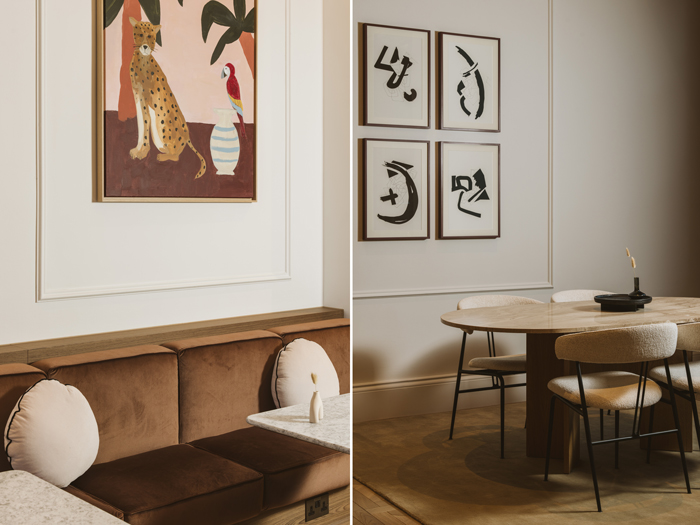
Ross Steele, Development Director, Feldberg-Capital, said:
“In line with our vision to deliver financial success for investors whilst championing sustainable practices and enhancing local communities where we invest, we are proud to have worked with Anomaly to deliver The Eversholt, one of the standout assets from our London Akoya venture.”
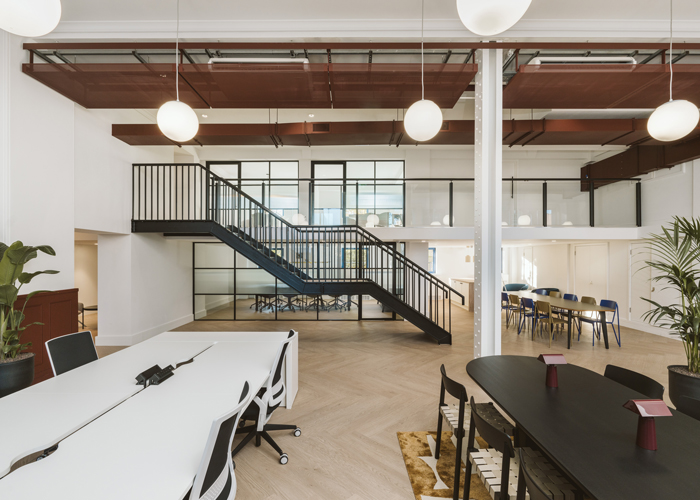
Anomaly delivered 7 key design features for The Eversholt:
1. Anomaly’s holistic design approach focused on preserving the buildings’ individual identities, such as the architectural elements and layout, while creating a modern experience. Original features such as the cornicing, wall panelling and existing mezzanines were honoured in the overall design scheme.
2. The reception areas were carefully crafted to provide a warm and welcoming atmosphere, with distinctive features in each building creating a sense of individuality while still maintaining a sense of cohesion.
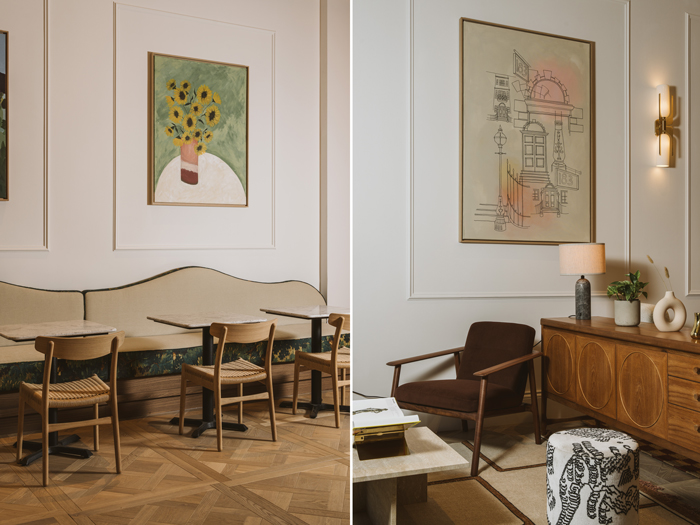
3. The buildings operate as a holistic collective office scheme, with shared facilities such as parking and cycling, but are otherwise independent in their entrances and office accommodation, so that they maintain individual identities, subtly denoted by changes in colour of key touchpoints.
4. The use of heritage colours, such as Racing Green, Deep Aubergine, and Terracotta, tied the buildings together, while timber parquet flooring and reintroduced cornicing added warmth and character. These thoughtful design choices create a balance between the historical significance of the building and the comfort and functionality required for modern office spaces.
5. Pendant globe lights within the workspace were dropped to create a more human level and a subtle nod back to the original design of the building as a sorting office. While offering a point of difference from ubiquitous strip lights found in contemporary offices.
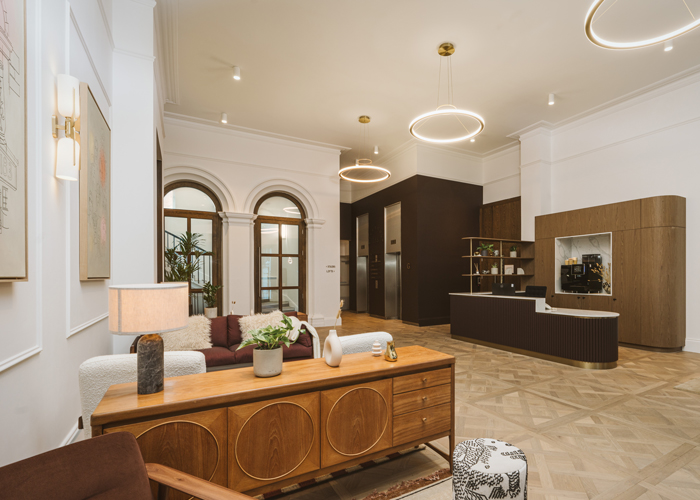
6. Sustainability was a key consideration in the design process. Anomaly repurposed existing elements and furniture, integrated sustainable materials like Bolon flooring, and prioritised thermal and energy performance improvements.
7. Anomaly also managed to reuse all desking and task chairs from the buildings, through a deep clean. Where it couldn’t be reused it was donated to an office furniture charity for redistribution, and any new furniture looked to UK suppliers who could provide EPDs where possible to align with the sustainability aspirations.




